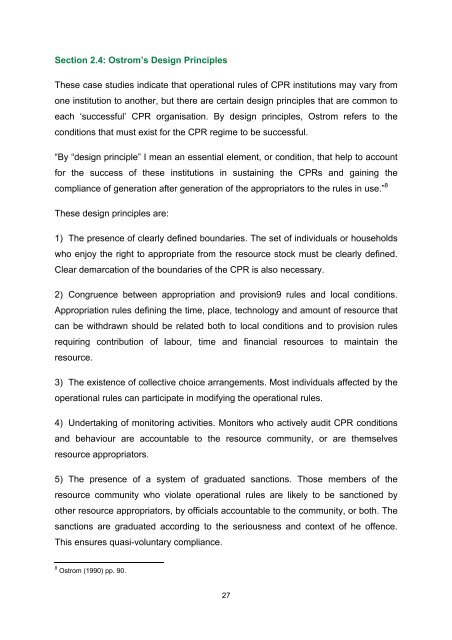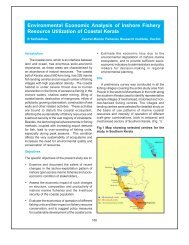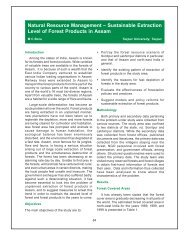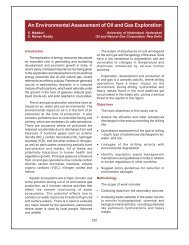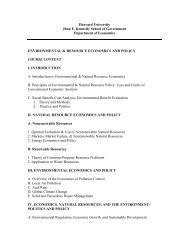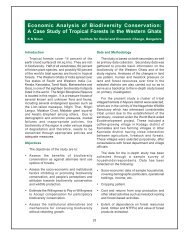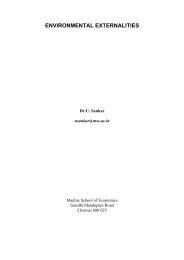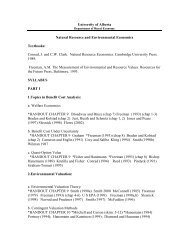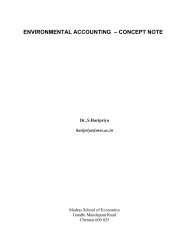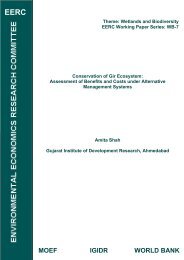PDF 3.08 MB
PDF 3.08 MB
PDF 3.08 MB
Create successful ePaper yourself
Turn your PDF publications into a flip-book with our unique Google optimized e-Paper software.
Section 2.4: Ostrom’s Design Principles<br />
These case studies indicate that operational rules of CPR institutions may vary from<br />
one institution to another, but there are certain design principles that are common to<br />
each ‘successful’ CPR organisation. By design principles, Ostrom refers to the<br />
conditions that must exist for the CPR regime to be successful.<br />
“By “design principle” I mean an essential element, or condition, that help to account<br />
for the success of these institutions in sustaining the CPRs and gaining the<br />
compliance of generation after generation of the appropriators to the rules in use.” 8<br />
These design principles are:<br />
1) The presence of clearly defined boundaries. The set of individuals or households<br />
who enjoy the right to appropriate from the resource stock must be clearly defined.<br />
Clear demarcation of the boundaries of the CPR is also necessary.<br />
2) Congruence between appropriation and provision9 rules and local conditions.<br />
Appropriation rules defining the time, place, technology and amount of resource that<br />
can be withdrawn should be related both to local conditions and to provision rules<br />
requiring contribution of labour, time and financial resources to maintain the<br />
resource.<br />
3) The existence of collective choice arrangements. Most individuals affected by the<br />
operational rules can participate in modifying the operational rules.<br />
4) Undertaking of monitoring activities. Monitors who actively audit CPR conditions<br />
and behaviour are accountable to the resource community, or are themselves<br />
resource appropriators.<br />
5) The presence of a system of graduated sanctions. Those members of the<br />
resource community who violate operational rules are likely to be sanctioned by<br />
other resource appropriators, by officials accountable to the community, or both. The<br />
sanctions are graduated according to the seriousness and context of he offence.<br />
This ensures quasi-voluntary compliance.<br />
8 Ostrom (1990) pp. 90.<br />
27


